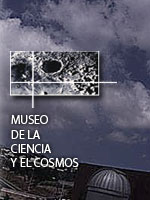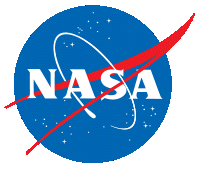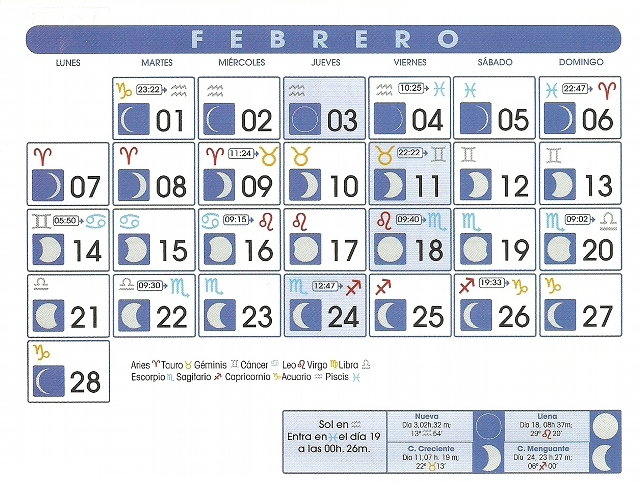The Sky this month - Febrero 2010
An anniversary this month: 80 years ago, the young astronomer Clyde Tombaugh discovered the (former) planet Pluto at Lowell Observatory after a year of grinding, diligent work.
Through most of 1929 and early 1930, Tombaugh photographed and analyzed hundreds of star fields along the ecliptic from Cancer to Gemini in search of "Planet X". Tombaugh planned to start his search in Gemini, but the full moon was in the way. So he started just next door, in the constellation Cancer, and worked his way all the way around the sky back to Gemini a year later.
Turns out Pluto was in Gemini after all. It seems Murphy's Law applies to the heavens as well.
Now for this month's sky. If you liked Enero, then you'll like Febrero even more...
The bright stars of Orion, Taurus, and the Big and Little Dogs still dominate in the north; the summer Milky Way arcs across the sky south of the equator, offering hundreds of deep-sky objects for inspection with binoculars or a small scope. Mars still shines bright and beckons the patient observer to look for dark markings of crater fields and white polar caps against the orange-red desert that dominates the planet.
And Venus returns this month. The bright planet slowly emerges from the sun's glare to make an appearance in the early evening sky. In mid-month, Venus meets with Jupiter and the crescent moon just after sunset to put on a beautiful show.
Febrero also presents an uncommon chance to spot the bright asteroid Vesta. At opposition on Febrero 17, Vesta cruises through the constellation Leo over the next several weeks. As we explain below, the best nights to spot this 6th magnitude asteroid are Febrero 16-17 when it passes between the bright stars gamma Leonis and 40 Leonis.
Looking for a short and sweet observing session on a busy Febrero night? Northern observers can look almost directly overhead for the star clusters of Auriga, especially M36, M37, and M38. And don't forget ε Aurigae, the strange stellar system that's now in the midst of an eclipsed as a flat, dark disk of material passes in front of the star. The star is expected to dim again over the next several months. Just 2 degrees west of epsilon, look for the sparse but unmistakable open cluster NGC 1664. A small scope at low-to-moderate power gives the best view.
n the southern hemisphere, you're spoiled for choice. For a quick look, take a look at the triple star alpha Crucis at the foot of the Southern Cross. The close pair of whitish stars is separated by 4″; you'll need a telescope at 50-80x or more to split them. The fainter 3rd star lies some 90″ away. And check out more colorful pair alpha Circini just southeast of Crux and next to alpha Centauri. The yellow and red components of this double are a fine sight in a 3-inch or larger scope.
Moon
Third Quarter: Feb. 5 at 23:48 UT
New Moon: Feb. 14 at 2:51 UT
First Quarter: Feb. 22 at 00:42 UT
Full Moon: Feb. 28 at 16:38 UT
Planets
Mercury. Still visible about 7 degrees above the eastern horizon at sunrise. Binoculars give you a better view. The planet moves back towards the sun and brightens over the month. Best view is from the southern hemisphere.
Venus moves a little higher above the western horizon each night. It's too close to the sun early this month to see with the unaided eye. But by mid-month, it begins to move higher than the fast-sinking Jupiter. As the planets pass, they make a striking pair beside the thin crescent moon. Scan the skies just after sunset on Feb. 14-16 for the best view. Binoculars will help.
Mars. Though it will fade somewhat over the month, Mars is still a dominant presence in the eastern sky in the constellation Cancer. The faster-moving Earth is now passing by Mars, which causes the planet to appear to move westward in the sky rather than the normal eastward direction. This "retrograde" motion comes to an end on Marzo 11. For the best chance at seeing surface features, observe the planet with a telescope when it's high in the sky. Mars lies just 3 degrees north of M44 in Cancer on Feb. 4
Jupiter. The King of Planets has dominated the sky for the past 8 months, but it's sinking into the western sky at sunset. Though it's by no means primed for telescopic viewing, the planet makes lovely conjunctions with the crescent moon and Venus in mid month.
Saturn rises earlier each night... about 8:30 p.m. local time by mid month. It's finally high enough to see at a decent hour, certainly before midnight if you have a clear view of eastern Virgo. The rings are close to edge-on; the disk is a respectable 19″ across... larger than Mars.
Uranus sinks low in the sky at sunset; Neptune is lost in the sun's glare.
Celestial Events
- There are no major meteor showers this month, and no comets within reach of small scopes. But there are some events worth checking out...
- TheZodiacal light is most evident from Feb. 1-15. Look for this eerie glow about an 90 minutes after sunset. It looks like a white pyramid of light extending along the zodiac. Dark sky is required to see this.
- On Feb. 24, the bright star Wasat in Gemini is occulted by a gibbous Moon.
- And the bright asteroid Vesta puts on a show in Leo. Vesta shines at magnitude 6, so it's not easily visible with the unaided eye. A pair of binoculars or a small scope will show it clearly. Feb. 16-17 offer you the best chance to easily find this minor planet, as Vesta passes through the tiny space between the bright stars Algieba (gamma Leonis) and 40 Leonis just below. You may see the asteroid move with respect to these stars over the course of a few hours. Well worth a look.
Vesta was the 4th asteroid discovered. Olbers first spotted it in 1807. It's about 500 km across, which ties it with Pallas for second place behind the largest asteroid, Ceres.






.gif)


.gif)



